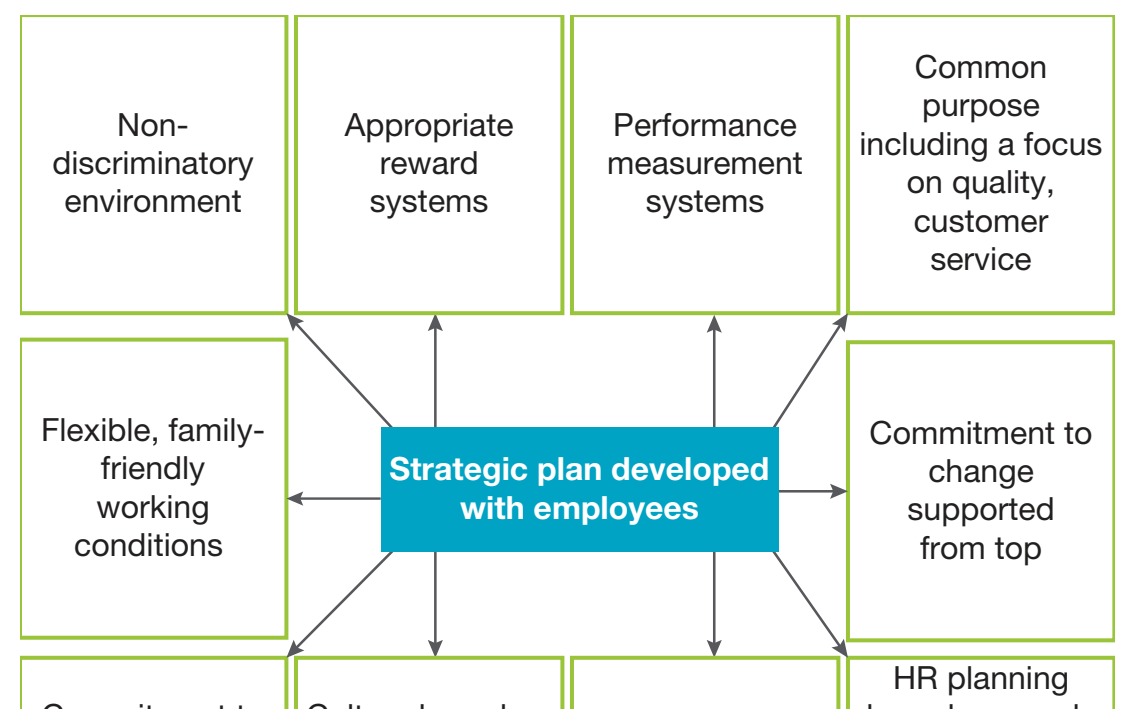Photo AI
Last Updated Sep 24, 2025
Performance Management Strategies Simplified Revision Notes for SSCE HSC Business Studies
Revision notes with simplified explanations to understand Performance Management Strategies quickly and effectively.
453+ students studying
Performance Management Strategies
Overview
Performance management is a vital facet of human resource management, emphasising two core elements:
- Administrative Performance Management: Centres on accountability and assessment. It supports decisions regarding employment status and ensures adherence to set standards.
- Developmental Performance Management: Encourages employee development and skill enhancement. It promotes both personal and professional growth.
Understanding the differences between these approaches is essential for efficient resource and expectation management.
Introduction to Performance Management
Definition and Significance
- Performance Management: The process of aligning employee activities and outputs with the goals of the organisation.
- Developmental Function: Improves skills and performance (e.g., training initiatives to enhance capabilities).
- Administrative Function: Assists in managing promotions and compensation (e.g., sales targets linked to bonuses).
Strategic Tool: Performance management guarantees that the workforce's efforts are strategically aligned with the organisation's objectives, crafting a unified action plan.
Alignment with Business Objectives
- Links employee performance with business goals, ensuring shared targets.
- Improves employee satisfaction, clarifies expectations, and maintains consistent feedback.
- Techniques include regular meetings and feedback loops:
- Aligned Performance: Teams are more successful when goals and feedback cycles are coordinated.
Performance Management Systems
Overview
Performance Management Systems: A structured approach for synchronising employee work with organisational objectives through monitored performance.
Types of Systems
-
360-Degree Feedback:
- Acquires feedback from multiple sources (peers, managers, employee).
- Strength: Provides comprehensive insights. Limitation: Can be biased and time-consuming.
-
Management by Objectives (MBO):
- Goals are collaboratively set by employees and management.
- Strength: Offers clear focus. Limitation: Could neglect procedural details. Example: Boost sales by quarter end.
-
Ongoing Performance Monitoring:
- Provides continuous real-time feedback.
- Strength: Facilitates quick adjustments. Limitation: Requires significant resources.
Key Components
-
Goal Setting: Targets clear and attainable objectives that align with organisational goals (e.g., improve service quality metrics).
infoNoteTips for Effective Goal Setting:
- Be specific and quantifiable.
- Integrate personal and organisational objectives.
- Conduct regular reviews.
-
Performance Appraisals:
- Narrative Methods: Suitable for qualitative feedback.
- Rating Scales: Effective for quantitative evaluation.
- BARS: Combines narrative and numeric feedback.
-
Feedback Mechanisms
- Oral and written feedback ensure ongoing improvement (e.g., coaching sessions).
Challenges and Solutions
- Common Challenges: Resistance to change, engagement problems.
- Solutions:
- Workshops: Prepare employees for new systems.
- Regular Updates: Align performance with organisational objectives.
Best Practices
- Regular training and updates.
- Integrate with organisational strategies.
Conducting Performance Review Meetings
Overview
Performance review meetings drive employee development and align with organisational goals. These structured meetings discuss performance, set objectives, and identify growth opportunities.
Preparation and Execution
-
Preparation:
- Review previous data.
- Establish a clear agenda.
-
Execution:
- Initiate Positively: Recognise achievements.
- Discuss Strengths and Areas for Improvement: Provide balanced, constructive advice.
Best Practices
- Feedback Delivery: Utilise the "sandwich" technique (positive-negative-positive).
- Engagement: Utilise open-ended questions and role-playing to enhance interaction.
Example Role-Play Scenario:
- Challenge: Enhance teamwork.
- Strategy:
- Begin by acknowledging the team member's contributions
- Discuss specific situations where collaboration could be improved
- Jointly develop a plan with scheduled check-ins for support and feedback
Post-Meeting Actions
- Document meetings and outcomes.
- Create an action plan.
- Monitor progress through follow-ups.
Designing Performance Appraisal Forms
Key Elements
- Personal Information: Essential for identifying employees.
- Job Title and Objectives: Clearly defined expectations throughout the appraisal period.
- Rating Sections: Designed for straightforward and effective performance evaluation.
- Feedback Areas: Crucial for constructive improvement insights.
User-Friendliness
- Clear Language: Essential for understanding. Use straightforward terminology.
- Logical Flow: Organise information systematically.
- Intuitive Rating Scales: Ensure easy comprehension.
Key Takeaways:
- Core elements include Personal Information, Objectives, Ratings, and Feedback.
- User-friendly forms feature clear organisational flow and easy-to-understand scales.
Practical Examples and Visual Aids
Case Studies
Example 1: Tech Innovators Ltd.
- Outcome: Productivity rose by 15%.
- Strategy: Management by Objectives (MBO).
Example 2: Global Retail Corp
- Outcome: 20% reduction in employee turnover.
- Strategy: 360-degree feedback.
Example 3: Creative Agency
- Outcome: Boosted creativity and efficiency.
- Strategy: Continuous performance evaluation.
Iconography
Visual aids demonstrate the impact of performance management and the effectiveness of strategies:
500K+ Students Use These Powerful Tools to Master Performance Management Strategies For their SSCE Exams.
Enhance your understanding with flashcards, quizzes, and exams—designed to help you grasp key concepts, reinforce learning, and master any topic with confidence!
370 flashcards
Flashcards on Performance Management Strategies
Revise key concepts with interactive flashcards.
Try Business Studies Flashcards39 quizzes
Quizzes on Performance Management Strategies
Test your knowledge with fun and engaging quizzes.
Try Business Studies Quizzes77 questions
Exam questions on Performance Management Strategies
Boost your confidence with real exam questions.
Try Business Studies Questions27 exams created
Exam Builder on Performance Management Strategies
Create custom exams across topics for better practice!
Try Business Studies exam builder24 papers
Past Papers on Performance Management Strategies
Practice past papers to reinforce exam experience.
Try Business Studies Past PapersOther Revision Notes related to Performance Management Strategies you should explore
Discover More Revision Notes Related to Performance Management Strategies to Deepen Your Understanding and Improve Your Mastery
96%
114 rated
Strategies in human resource management
Recruitment and Selection
462+ studying
185KViews96%
114 rated
Strategies in human resource management
Job Design Strategies
226+ studying
198KViews96%
114 rated
Strategies in human resource management
Reward Systems in HRM
499+ studying
184KViews
